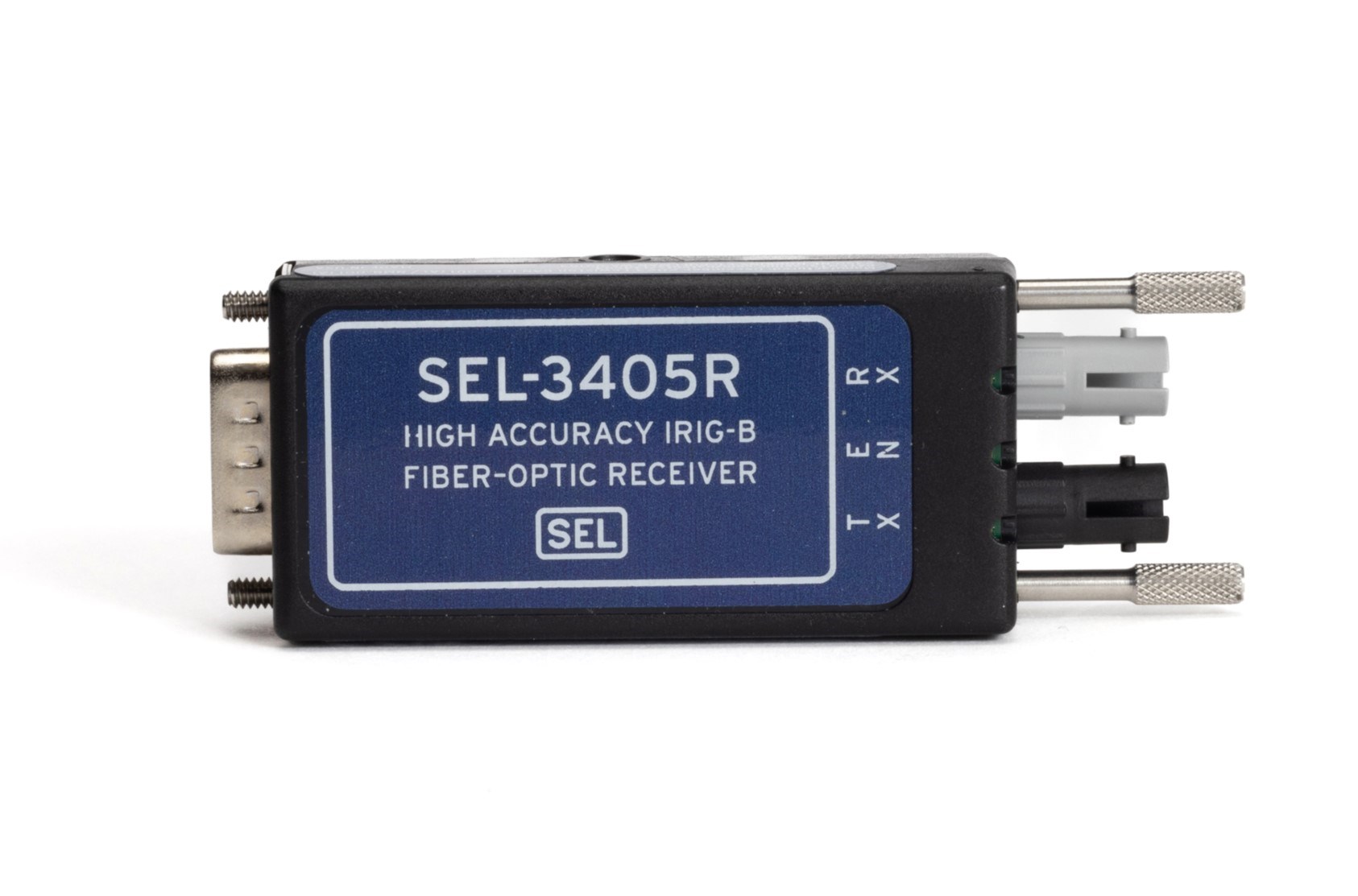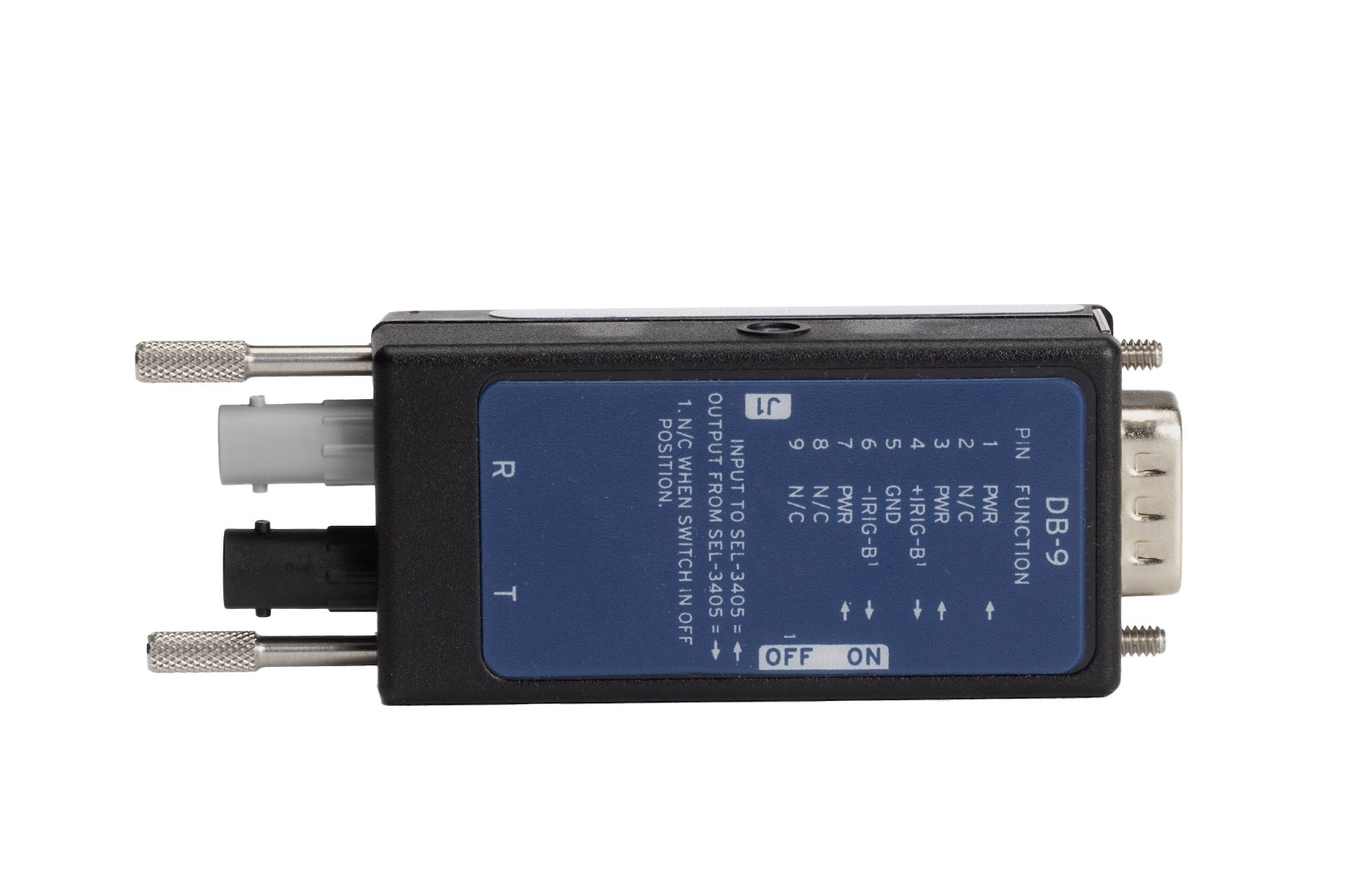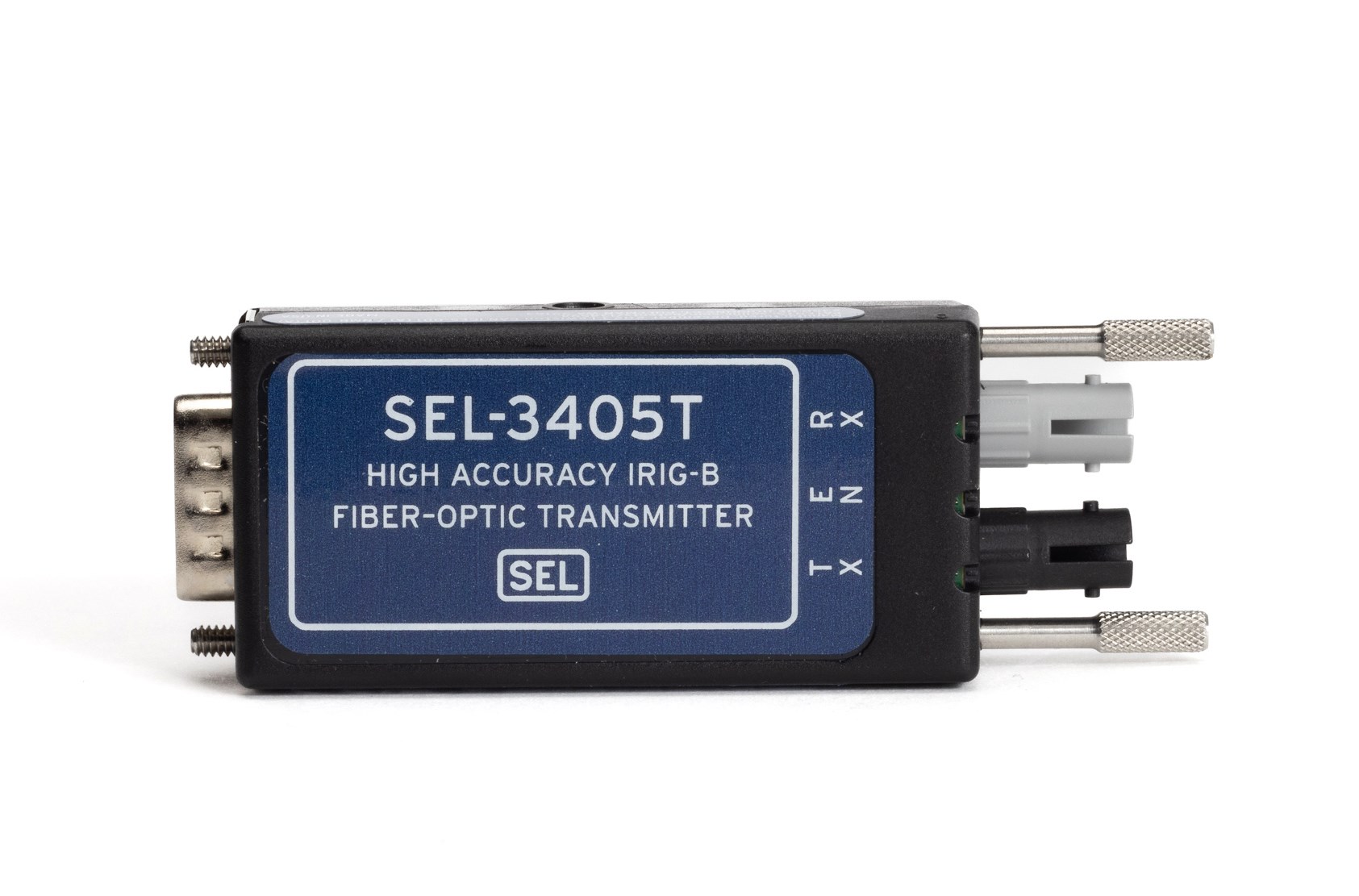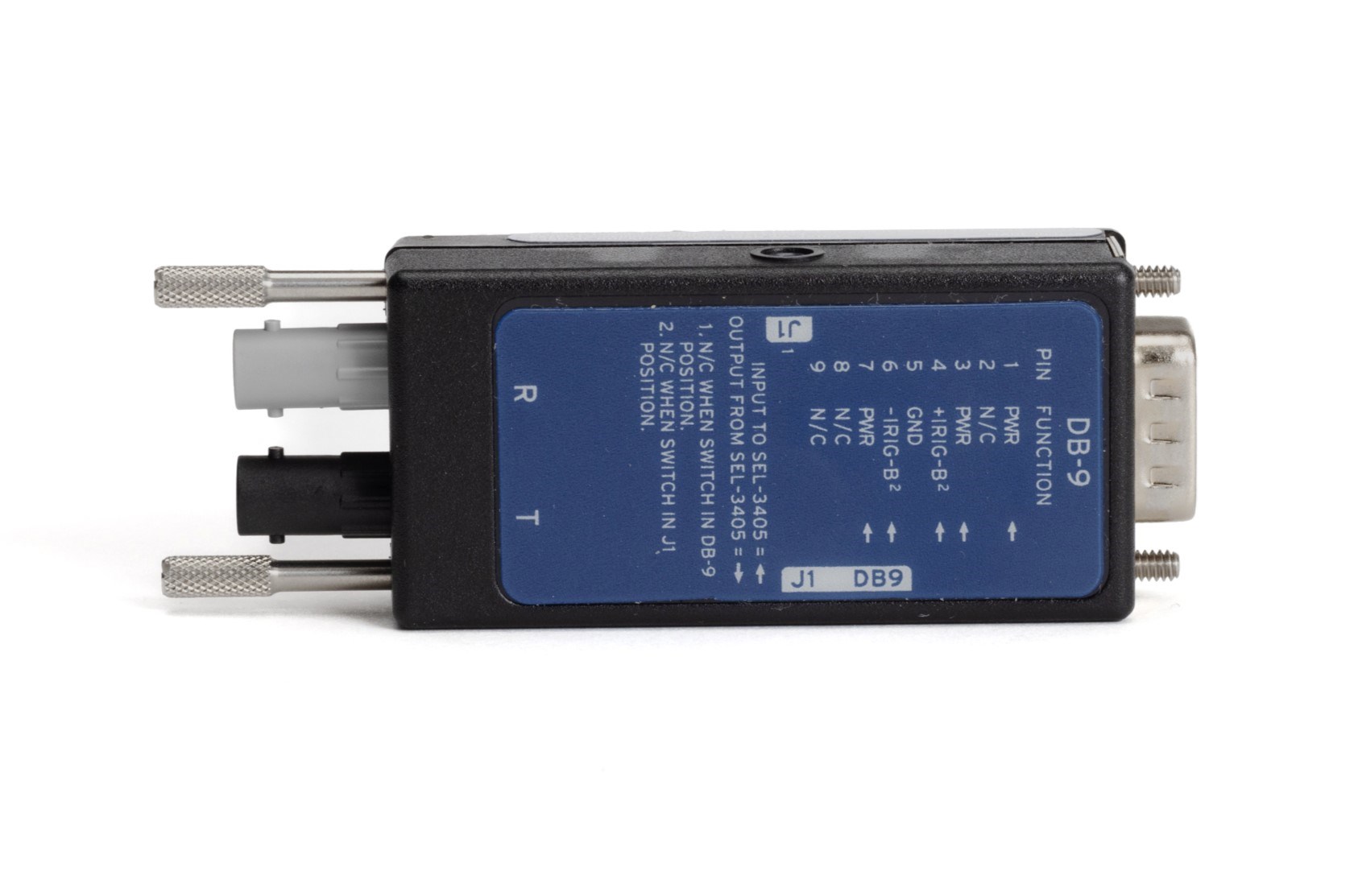
SEL-3405
High-Accuracy IRIG-B Fiber-Optic Transceiver
Send delay-compensated demodulated IRIG-B up to 4 km over fiber-optic cable with SEL-3405 High-Accuracy IRIG-B Fiber-Optic Transceivers, while maintaining better than 200 ns of accuracy from the time source to the end device.
Starting At
$261Time-Synchronize Remote Devices—Use the SEL-3405 to send IRIG-B across distances where installing a GPS antenna is not feasible. Using a pair of SEL-3405 transceivers (with one connected at the clock and another at the end device), the end device will receive delay-compensated IRIG-B without requiring user-configured settings. The SEL-3405 can receive time from any SEL clock and send it to any end device. The SEL-3405 automatically adjusts for the delay that occurs as the signal moves though the fiber. Send time between individual devices, or install the transceivers in a ring to provide <1 µs accurate IRIG-B signals to as many as three devices simultaneously.
Benefits of Sending Time Over Fiber—Using the SEL-3405 to distribute IRIG-B time signals increases reliability because fiber-optic cables are far less susceptible to electromagnetic interference (EMI)/radio frequency interference (RFI) than copper links and provide improved isolation from ground potential rise and other electrical hazards.
IRIG-B Where You Need It—GPS antennas require a clear view of the sky in all directions. This may not be possible for all installation locations. Whether the device that needs accurate time is at the bottom of the dam or in a hard-to-reach location, the SEL-3405 provides accurate IRIG-B time.
Time-Synchronization Pass-Through—The SEL-3405 can pass any demodulated timing signal (e.g., IRIG-B or pulse per second [PPS]) over a single multimode fiber and maintain a timing accuracy of better than 2 µs.
Transceiver Mounting Options
Use an SEL Transceiver Mounting Kit and adapter cable when connecting the SEL-3405 to IEDs with an RJ-45 male serial connector or when the mounting depth is an issue (e.g., in switchgear applications). These kits provide a simple and secure way to remote-mount the transceiver away from the host connector:
- 915900573—Mounting Kit for SEL Transceiver; includes mount only
- 915900574—Mounting Kit for SEL Transceiver; includes mount and SEL-C478A cable (6 ft, DB-9 female to RJ-45 male)
- 915900575—Mounting Kit for SEL Transceiver; includes mount and SEL-C641 cable (6 ft, DB-9 female to DB-9 male)
Adapter Cables
The SEL-3405 is compatible with any SEL clock. Use the SEL-C940 DB-9 to Dual BNC Male Cable to connect the device to an SEL-3400 IRIG-B Distribution Module. Use one BNC connection to provide time to the SEL-3400 and the other to power the SEL-3405. Use the SEL-C942 DB-9 to BNC Male to Tinned Wires Cable to power the device using an SEL-9321 Power Supply. Use the BNC connection to input time to the end device or to receive time from a clock, and use the tinned wires for power. The SEL-C941 cable will provide external power when power is unavailable through an IED or a clock serial port.
Features
-
- 1
DB9 Connector
- 2
LED indicators
- 3
Fiber-Optics Port
123
-
-
- 1
Mono jack for IRIG-B signal (J1)
1
-
-
- 1
DB9 Connector
- 2
LED indicators
- 3
Fiber-Optics Port
123
-
-
- 1
Mono jack for IRIG-B signal (J1)
1
-
Details
High-accuracy, no settings
- Install the SEL-3405, and with no settings, the device will compensate for propagation delay in the fiber.
- Introduce less than 200 ns of inaccuracy, over distances as far as 4 km away.
Electrical Isolation for IRIG-B Signals
- Using the SEL-3405 to distribute IRIG-B time signals increases reliability because fiber-optic cables are far less susceptible to EMI/RFI than copper links, and provide improved isolation from ground potential rise and other electrical hazards.
Hardened for Substation Environments
- Trust in the same design and type-testing applied to critical protective relays.
- Employ in environments with a temperature range of –40° to +85°C (–40° to +85°F).
- Employ with confidence in extra-high-voltage (EHV) environments.

Transmitter for distributing IRIG-B time signals over distances using fiber-optic cables with delay compensation to isolate from ground potential rise and electrical inference.

Receiver for distributing IRIG-B time signals over distances using fiber-optic cables with delay compensation to isolate from ground potential rise and electrical inference.
The Firmware IDs for older versions of the firmware can typically be found in Appendix A of the instruction manual.



.png?n=63762313652000&preset=size-col-12&bp=xl)